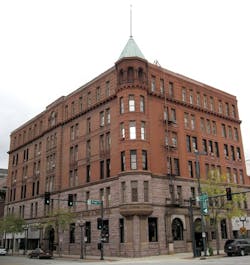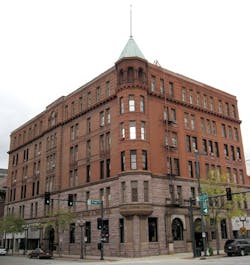Building Basics that Extend Life-Cycle
With my home base being in Cedar Rapids, IA, for the past 30 years, I consider myself fortunate in seeing this community of 150,000 people reinvent itself time and time again. I relocated here in the late 1970s to a flourishing downtown retail infrastructure within a less-than-attractive CBD architectural scheme. Over the years, as telemarketing firms, banks, law offices, and insurance businesses replaced the transplanted store spaces, renovated buildings were uncovered to reveal long-forgotten and surprising details. Vaulted windows, archways, setbacks, and other features resulted in a blended hybrid of architectural styles. Building by building, the revealed beauty of the past seemed to spur on business owners' enthusiasm and their commitment to the future. Today, downtown has become a virtual delight of textures, dimensions, hues, and loft-style spaces - intermixed with equally interesting modern structures - that house a combination of office, retail, entertainment, housing, and recreation uses.
It's truly a pleasure to enjoy such views on my drive to work each day ... which brings me to the point of this column and its correlation to this month's two stories on the care and maintenance of buildings: I've finally discovered the secret behind one of the structures I've often admired on my route that remains attractive, viable, and never-changing - a 6-story red-stone structure built in 1896 (home to an independent and locally owned bank) that I don't recall ever undergoing a major facelift or renovation during my time in Cedar Rapids. With the creative staff's recent relocation to downtown office spaces, I've also had to change my established route to and from work. Now, each morning, I see this building's caretaker either wash its exterior, windows, or sidewalk; buff up its bronze entryway; or pinpoint an area his keen eye has discerned that needs a bit of extra attention. My curiosity piqued: I actually parked my car and ventured into the building to learn that the same mindset applies to the bank's interior as well. The care and maintenance of this building is truly impressive, and the results speak for themselves.
The adage that "everything old is new again" is usually reserved to describe clothing trends or a particularly interesting structure once it has been successfully renovated. For the Guaranty Bank Building in Cedar Rapids, however, it is quite simply an everyday occurrence.

